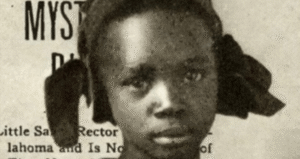Canada is a bilingual country where both English and French are official languages. While English is the most widely spoken language across the country, French is prevalent, especially in certain regions like Quebec and parts of New Brunswick, Ontario, and Manitoba. The presence of French in Canada dates back centuries and is deeply intertwined with the country’s history, colonization, and cultural development.
In this article, we will explore why some Canadians speak French, focusing on the historical context, cultural preservation, and the impact of government policies that maintain the country’s bilingualism.
1. Historical Context: French Colonization of Canada
The presence of French speakers in Canada can be traced back to the early days of European colonization in North America. In the early 17th century, France established colonies in what is now eastern Canada, marking the beginning of French settlement in the region.
A. New France
In 1608, French explorer Samuel de Champlain founded Quebec City, which became the capital of New France, the name given to France’s colonies in North America. French settlers established communities along the St. Lawrence River and developed agricultural and trading networks, particularly in the fur trade.
New France continued to grow throughout the 17th and 18th centuries, with French settlers spreading through what are now Quebec, New Brunswick, Nova Scotia, and parts of Ontario. During this period, the French language became firmly established in these regions, and French culture and traditions flourished.
B. The Treaty of Paris and British Rule
In 1763, following the Seven Years’ War, France ceded control of New France to Britain under the Treaty of Paris. While this marked the beginning of British rule in Canada, the French-speaking population, particularly in Quebec, remained resilient in preserving their language, culture, and religion. The British allowed French Canadians to maintain their language and legal traditions, leading to the continued dominance of French in the region.
Even under British rule, French-speaking Canadians—known as Canadiens—maintained their distinct identity, with French remaining the primary language in Quebec and surrounding areas. This laid the foundation for the strong French presence in Canada that continues to this day.
2. The Role of Quebec: The Heart of French Canada
Quebec is the epicenter of French culture and language in Canada. It is the largest province by area and the second-largest by population, with over 7 million people speaking French as their first language. Quebec’s history and identity are closely tied to the preservation and promotion of the French language, making it a critical region in understanding why so many Canadians speak French.
A. The Quiet Revolution and the Rise of Quebec Nationalism
In the 1960s, Quebec underwent a period of intense social, political, and cultural change known as the Quiet Revolution. During this time, the Quebec government, under the leadership of the Liberal Party and later the Parti Québécois, began to assert the province’s distinct identity and culture, particularly its French heritage.
As part of the Quiet Revolution, Quebec saw the rise of Quebec nationalism, with many advocating for greater autonomy from Canada or even full independence. Central to this movement was the preservation and promotion of the French language, which became a symbol of Quebec’s unique identity within Canada. This led to significant policy changes, including the Charter of the French Language (also known as Bill 101), passed in 1977.
B. Bill 101 and the Protection of the French Language
Bill 101 was a landmark piece of legislation in Quebec aimed at protecting and promoting the use of French in the province. It established French as the official language of Quebec and mandated that French be the primary language used in government, education, business, and public life. This law played a critical role in ensuring that French remained the dominant language in Quebec and that future generations would continue to speak French.
Under Bill 101, immigrants to Quebec are required to send their children to French-language schools, reinforcing the use of French across diverse communities. The law also requires that businesses use French in their operations, including signage and communication with employees.
The protection of French in Quebec has helped solidify the province’s status as a French-speaking region within a predominantly English-speaking country. As a result, French remains a vibrant and thriving language in Quebec, with millions of people using it in their daily lives.
3. French-Speaking Communities Outside of Quebec
While Quebec is the primary French-speaking region in Canada, French-speaking communities also exist in other provinces, particularly in New Brunswick, Ontario, and Manitoba.
A. New Brunswick: Canada’s Only Officially Bilingual Province
New Brunswick is unique in that it is the only province in Canada that is officially bilingual, with both English and French recognized as official languages. Approximately one-third of New Brunswick’s population speaks French as their first language, primarily in the northern part of the province.
French-speaking Acadians, descendants of the original French settlers who arrived in the region in the 17th century, have maintained their language and culture despite historical displacement and challenges. Today, New Brunswick’s French-speaking communities continue to thrive, and the province’s bilingualism is enshrined in law, ensuring that French is used in government, education, and public services.
B. Ontario and Manitoba: Francophone Communities
Ontario, Canada’s most populous province, also has a significant Francophone population, with more than 500,000 people who speak French as their first language. While the majority of Ontario’s French-speaking population is concentrated in the eastern and northern parts of the province, French-language services and schools are available throughout Ontario.
Similarly, Manitoba has a strong Francophone presence, particularly in the southern part of the province. French-speaking communities in Manitoba have played a vital role in the province’s history, and the language is recognized as an official language in Manitoba’s legal system and government.
4. Government Support for Bilingualism
Canada’s bilingual nature is not only a product of history but also a result of government policies aimed at promoting and preserving both French and English as official languages. In 1969, the Official Languages Act was passed, establishing English and French as the two official languages of Canada and ensuring that both languages would be used in federal government operations.
The Act guarantees that all Canadians have the right to receive federal government services in either English or French, regardless of where they live. It also promotes bilingualism in Canadian society by supporting French-language education, media, and cultural activities.
In addition to the Official Languages Act, the Canadian government has implemented policies to promote French immersion programs in schools across the country. These programs allow English-speaking students to learn French from a young age, helping to foster bilingualism and preserve French as a national language.
5. Cultural and Economic Ties to France and Francophone Countries
Canada has strong cultural and economic ties to France and other Francophone countries, further reinforcing the importance of the French language. As a member of the Organisation Internationale de la Francophonie (OIF), Canada participates in global efforts to promote the French language and strengthen cultural and economic exchanges between Francophone nations.
These ties not only enhance the cultural diversity of Canada but also promote the use of French in international diplomacy, trade, and tourism. The continued presence of French in Canada is a reflection of the country’s global connections and its commitment to maintaining its linguistic heritage.
Conclusion
The prevalence of French in Canada is deeply rooted in the country’s history, particularly the legacy of French colonization and the resilience of French-speaking communities in Quebec and beyond. Over the centuries, French has remained a vibrant and essential part of Canada’s national identity, thanks to cultural preservation efforts, government policies, and the commitment of French-speaking Canadians to maintain their language and traditions.
Today, millions of Canadians speak French, whether they are descendants of the original French settlers, immigrants to Quebec, or participants in French immersion programs. The presence of French in Canada continues to enrich the country’s culture, making bilingualism a unique and defining feature of Canadian life.




